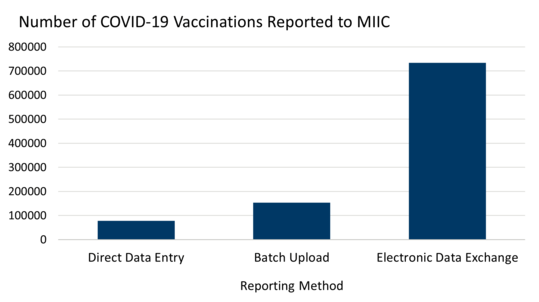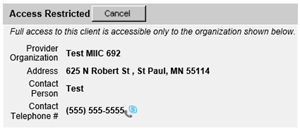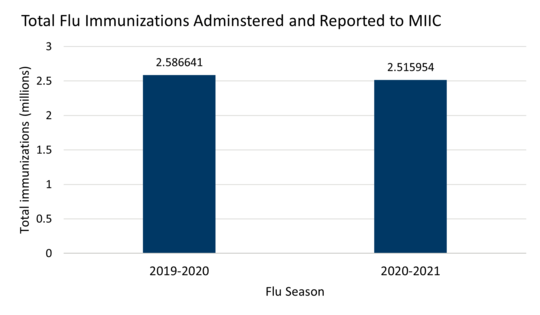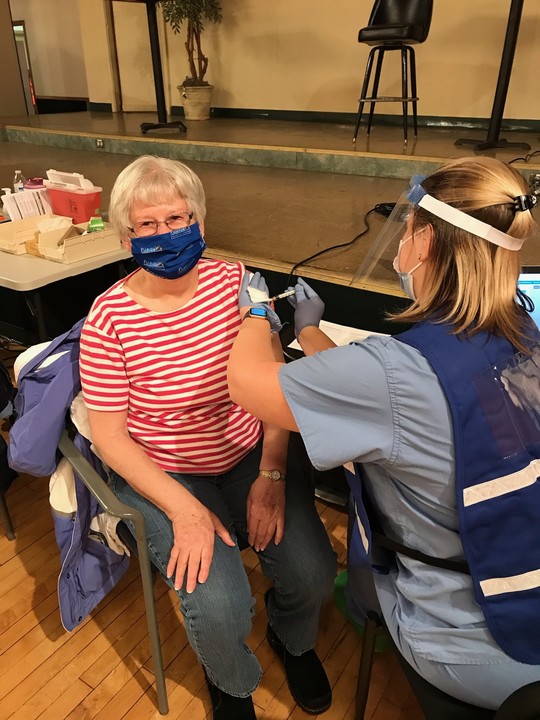COVID-19 vaccine administration data
Thank you to all our COVID-19 vaccine partners, not only for your work to administer the vaccine, but also to report those administered doses to MIIC within 24 hours of administration. As of March 4, 2021, 1,450,360 doses of COVID-19 vaccine have been administered and reported to MIIC. Of those, 88.8% (1,288,316 doses) were reported within 24 hours of vaccine administration.
Vaccine administration data can be reported to MIIC in one of three ways: direct data entry, file upload through the user interface, and electronic data exchange. Reporting vaccination data to MIIC electronically is strongly encouraged to ensure the timely reporting of COVID-19 vaccination data. More than 76% of COVID-19 vaccine doses reported to MIIC have been reported through electronic data exchange. If your organization is interested in working with MDH to create an interface between your electronic health record (EHR) and MIIC, please contact the MIIC help desk.
 Electronic data exchange is the most common reporting method with over 700,000 vaccinations reported that way. About 150,000 vaccinations have been reported via batch upload. Less than 100,000 vaccinations have been reported via direct data entry.
Historical versus administered doses
COVID-19 vaccinations should be reported to MIIC by the organization that has administered the immunization. These doses should be reported to MIIC as “administered” and not “historical.” For immunization data, the term “historical” refers to doses reported by an organization that did not administer the immunization.
If a client informs your organization that they received a COVID-19 vaccination at another location, your organization can report that vaccination to MIIC as “historical” after verifying the vaccination date and manufacturer. It is very important for the correct vaccination date and manufacturer to be reported.
Immunization spreadsheet
Many providers are using the immunization spreadsheet to batch upload COVID-19 vaccination data. While electronic data exchange is preferred, the immunization spreadsheet may be an appropriate alternative if your organization’s EHR is unable to send and receive HL7 immunization messages.
If your organization is currently using the immunization spreadsheet:
- Please provide client address (columns E, F, G, H) as complete as you can.
- Remember to download a new template from MIIC each time to ensure you are using the correct spreadsheet template. If you upload immunizations on the incorrect template, the spreadsheet will be rejected, and you will be asked to fix and reupload the spreadsheet.
- The spreadsheet template was updated on Wednesday, Feb. 24. A new column has been added that allows you to identify which of the immunizations were administered by your organization.
- New column: Did your org administer dose? Y/N
- If this field is marked Y, this dose will show as administered by your organization.
- If this field is marked N or left blank, this dose will be marked as a “historical” dose (reported but not administered by your organization).
- Future updates to the spreadsheet template include adding columns to collect race, ethnicity, and phone number data. Subscribe to receive MIIC Data Submission and Exchange email updates about the immunization spreadsheet.
Refer to General Immunization Upload Using the Spreadsheet Template (PDF) for more information on using the immunization spreadsheet to batch upload vaccination data.
View your COVID-19 vaccine order history
Providers can view a history of their COVID-19 vaccine orders in MIIC. Click on “manage special vaccine events” under vaccine management. Enter your provider pin number to view the history of COVID-19 doses shipped to your site. If you do not have access to this feature in MIIC, please reach out to health.mdhvaccine@state.mn.us.
Client record locked to another organization
Clients have the right to lock their MIIC record to a specific provider organization, preventing other organizations from viewing their record. And sometimes a client’s record is accidentally locked.
If you are trying to view your client’s MIIC record and reach the “Access Restricted”screen, first verify with your client that your organization has permission to view their record. If yes, contact the organization the record is locked to and request the client’s MIIC record be unlocked. If the organization the record is locked to cannot help you, contact the MIIC help desk with the client’s name and the name of the organization the record is locked to.
 Access restricted screen in MIIC says "full access to this client is accessible only to the organization shown below" and gives the organization name and contact information.
Client record locked to your organization
If you are notified that a client’s record is locked to your organization and the client has agreed to the record being unlocked, use “manage client” to search for the client. Select their last name to view their demographics page. In the bottom right corner look for “Allow Sharing of Immunization Data?” Change the dropdown from No to Yes. Select “Save” on the top right of the personal information box. This will unlock the client’s record, allowing other MIIC provider organizations to view and add immunizations to the client’s record. If you have questions, contact the MIIC help desk.
 Client information tab has a drop-down option to select "yes" for "allow sharing of immunization data?"
Flu immunization update
Thank you to all our vaccine partners who are working hard to administer all routinely recommended vaccines, including seasonal flu. During the 2020-2021 flu season, 2,515,954 doses of seasonal flu vaccine have been administered and reported to MIIC (7/1/20 – 1/31/21). This compares to 2,586,641 doses of seasonal flu vaccine that were administered and reported to MIIC during the 2019-2020 season (7/1/19 – 1/31/20).
 2.586641 million flu immunizations were administered and reported to MIIC for the 2019-2020 flu season. 2.515954 flu immunizations were administered and reported to MIIC for the 2020-2021 flu season.
MIIC user guides
We are excited to welcome new users and new organizations to MIIC. More than 400 organizations have started using MIIC between October 2020 and February 2021. Whether you are a new MIIC user or an experienced MIIC user, it can be helpful to familiarize yourself with the MIIC User Guidance and Training Resources webpage. Several user guides and video-based learning resources have been updated recently, including:
MIIC webinar series
We have launched a four-part webinar series as of Feb. 16. The recordings of the first two webinars are posted at MIIC User Guidance and Training Resources; the third will be available soon. Join us for the final session, MIIC office hours, on Tuesday, March 9, from 11:30 a.m. to 12:30 p.m. Pre-registration is not required.
Please send your MIIC-related questions before the office hours. We will review and ensure that we can answer those questions during the Tuesday webinar. Please submit your questions to: health.miichelp@state.mn.us with the subject line: “Questions for MIIC office hours”. We will also take questions the day of the office hours. Click here to join the March 9 Microsoft Teams Live Event.
Carver County and Ridgeview health care system partnership
Local public health departments play a crucial role in the rollout of COVID-19 vaccine. They are at the intersection of being a safety net resource hub, liaison to the state health department, and well known within the community. Local public health departments are trusted partners for health care providers in their jurisdictions. Carver County took on this trusted partner role through a recent partnership with Ridgeview health care system.
After receiving its first supply of COVID-19 vaccines for patients, Ridgeview and Carver County partnered to open a large-scale, appointment-only vaccine clinic at a former dance ballroom in Waconia. They administered vaccines to nearly 2,100 of Ridgeview’s primary care patients and community members ages 65 years and older Feb. 4-5. More than 100 Ridgeview and Carver County staff and volunteers, with more than 1,000 combined hours of service, collaborated to put on the first Feb. 4-5 vaccine event, including administering vaccines, registering patients, assisting with parking and directing patients, and more.
 Vaccination site set-up in a former dance ballroom. People are getting vaccinated around the perimeter and the center of the room is roped off.
More than 1,200 additional doses were administered on Feb. 8 and another 500 on Feb. 19. Beyond its targeted patients, Ridgeview had approximately 300 doses to help Carver County Public Health finish vaccinating health care workers in phase 1a.
Ridgeview opened vaccination appointments to patients and community members in phases, beginning with patients ages 65 and older. They directly contacted those who met state and federal eligibility criteria. Carver County took on the role of ensuring patient data was safeguarded and transmitted to MIIC in a timely way, per MDH requirements. The PrepMod tool, created by the Maryland Partnership for Health, was used to book the appointments, register patients, and securely and quickly send the data to MIIC. This tool was purchased by MDH for use by local public health and tribal health departments for the COVID-19 vaccine rollout.
Carver County Public Health continues working with additional community partners, including local health care clinics and pharmacies, to allocate some of its vaccine supply to serve key priority groups. They are improving vaccine access in Carver County.
Carver County and Ridgeview’s partnership is a clear example of efficient public health work on vaccine rollout in Minnesota.
 Older woman in a mask getting a COVID-19 vaccine.
|